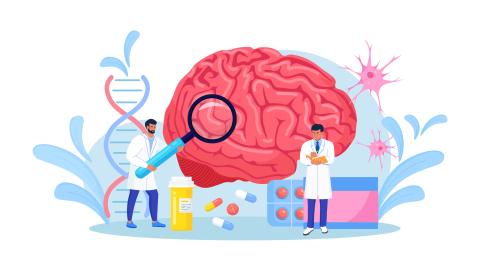Emetophobia Vs. Eating Disorders
Emetophobia Vs. Eating Disorders

To the untrained eye, the behavior of those with emetophobia may appear very similar to those with eating disorders. Outwardly, both may seem to have a strained relationship with food, their body, and certain physical bodily sensations. And while there are overlaps between the two disorders, they are two separate and distinct conditions.
What is important to note is that they are both equally debilitating. For those suffering from either disorder, life can feel disrupted and governed by these mental health conditions, and they are not to be taken lightly.
What is Emetophobia?
Emetophobia is the intense fear of vomiting. It involves overwhelming feelings of anxiety that can be triggered by vomiting, seeing vomit, seeing or hearing others vomit or feelings of nausea.
Emetophobia is classified as an anxiety disorder. While most people would say that they don’t enjoy being sick and avoid it if possible, those with emetophobia are trapped in a state of terrifying panic and avoidance which can severely limit their quality of life.
For example, a person with emetophobia might avoid going out in public or visiting friends or family for fear of seeing someone vomit or vomiting in front of others. In a bid to avoid the consequential anxiety or potential embarrassment, they often isolate themselves, which can make this a very lonely disorder to live with.
Symptoms may include:
- Restriction of food in fear of feeling sick or throwing up
- Avoiding hospitals or medical offices in fear of catching an illness that will cause them to throw up
- Avoiding certain foods that cause nausea
- Avoiding things that smell a certain way
- Being repulsed by any words associated with being sick or vomiting
- Only eating food at home or “safe locations.”
- Obsessing over the location of restrooms or trash cans (in case one does get sick)
What defines an eating disorder?
Eating disorders are serious mental health conditions categorized by persistent eating behaviors that negatively impact your health.
For example, someone with anorexia nervosa might spend hours worrying and ruminating about upcoming meals in fear they will lose control and overeat. They may avoid eating out at restaurants in fear they won’t be able to control what is served and be forced to eat foods that are on their “bad” list.
For someone with bulimia nervosa, they might feel extreme guilt for what they ate the evening before and therefore, restrict food until they feel so hungry that they binge-eat again. This is commonly called the Binge-Restriction Cycle and can leave the person feeling out of control and hopeless.
Common eating disorders include anorexia nervosa, bulimia nervosa, and binge-eating disorder. Eating disorders are often driven by excessive focus on your appearance, weight, or body shape, leading to particular eating habits that help the sufferer feel less anxious or feel like they are “in control.”
However, this isn’t always the case. For example, certain eating disorders are not driven by a fear of gaining weight or regaining control.
Avoidant Restrictive Food Intake Disorder (ARFID) is an eating disorder that involves avoiding foods (or entire food groups) due to the fear that the food will cause severe health issues.
Symptoms of eating disorders may include:
- Excessive calorie counting
- Excessive exercise
- Avoiding certain foods
- Adopting a highly restrictive diet
- Avoiding eating with others
- Avoiding social events
- Eating in secret
- Eating more than is considered ‘normal’
- Excessive feelings of guilt, shame or disgust toward oneself
- Hours of rumination about upcoming meals and food ingredients
- Excessive planning of future events to avoid certain foods/food groups
Similarities between the two
Those with Emetophobia and those with an eating disorder will often have an extreme degree of anxiety about food, food preparation, and food consumption.
Although the driving forces behind the two disorders may differ, if a person with emetophobia also limits their food intake, both can result in harmful effects on the body. This might include malnutrition, weight loss, difficulty concentrating, and other consequences such as cardiovascular complications.
Differences between the two
Although someone with emetophobia may experience difficulty with food avoidance, the reasons behind the behaviors are very different. For those with Emetophobia, this fear is driven by their fear of vomiting. So, for example, they may avoid certain foods they deem ‘risky,’ such as seafood or chicken, and they may even cut out whole food groups entirely.
Someone with emetophobia is always looking to avoid being or feeling sick. This is why they may engage in restrictive eating habits. The fear of vomiting is all-consuming, so they do everything they can to ensure it doesn’t happen.
Alternatively, those with eating disorders avoid food for fear of gaining weight. People with eating disorders often also struggle with body dysmorphic disorder, incredibly low self-esteem, or excessive negative feelings about their appearance.
While the behaviors of someone with an eating disorder or emetophobia may appear the same, the reason for their behaviors is very different. Therefore, a thorough assessment by a trained, compassionate mental health professional is advised if you are struggling with either of these conditions.
Resources
This post is presented in collaboration with ADAA's OCD and Related Disorders SIG. Learn more about the SIG.





















